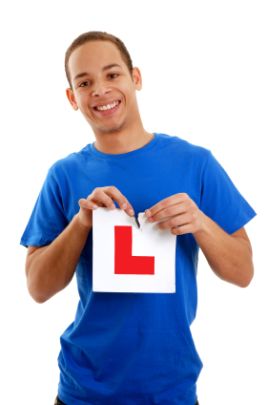The risk of accidents - some statistics
No-one wants to think that they will be involved in an accident, but being aware that an accident could happen to you and the statistics is important. Accidents happen to ordinary people, so anyone who thinks that 'it won't happen to me' is sadly mistaken.
So where do accidents tend to occur, what are the hotspots? Well the answer is that they tend to occur in and around towns. This could be because the roads tend to be busier and more congested here, and the more potential vehicles in a small space the more potential impacts there are, and pro rata there will be.
95% of accidents that involve pedestrians take place in and around towns, which is no great surprise, but it shows that pedestrians are particularly vulnerable in these areas, and it may be more of a surprise to you that 70% of accidents that involve an injury of some sort or another happen in and around towns, so they really are a big accident hotspot.
The only flip side of accidents in rural areas is that whilst there are much less of them, they can be much more severe when they happen. Cars flying around narrow country roads with no visiblity that hit each other clearly lead to a much more major accident than one car misjudging its stopping very slightly at the traffic lights and nudging the bumper of the car infront for instance in the town centre.
Motorways are, statistically speaking, the safest place to drive. Although we all know of horrific accidents and pile-ups on the motorway this is the safest statistically. The bad news is as just outlined, when accidents happen at those speeds they tend to be pretty bad.
Being aware of the fact that accidents happen is not supposed to make you paranoid or nervous of driving, but rather understanding where and when and WHY accidents happen can ensure you run through the appropriate 'what if' scenarios in your ahead, are always anticipating hazards and therefore give yourself the best chance to reacting to them safely and quickly enough to avoid accident for yourself and other road users who may be less diligent than yourself.
Related Articles...
Driving and mobile phones
Some people are confused about the rules about using a mobile whilst
driving, whilst others know the rules and break them. You might see other
people driving with a phone to their ear but you...
Road Tax Disc Explained
You might hear to this referred as to something called excise licence, but in common parlance (speech!) this is called road tax.
And you will have a circular piece of paper that comes to show...
Being aware of potential hazards
Having the maximum time possible to react to hazards is important and can be the difference between an awkward situation or even an accident and continuing safe driving.
This requires you not...
DSA Driving Theory Test
Do not view the DSA Driving Theory Test as something of an inconvenience. Instead view it as a way to develop useful knowledge that could save your life or that of someone else. If that seems like...
Vulnerable road users - pedestrians
Pedestrians whether old or young are all potentially vulnerable. Any impact at all on a pedestrian is potentially fatal, and that goes for a pedestrian of any age.
Of course within the class...
What to expect at a hazard perception test
The test has fourteen different clips, as outlined in the article entitled 'how to pass the hazard perception test'.
Each of those clips starts counting down from ten to zero, in order to...
How to help yourself stay safe whilst driving
It is a sad fact, but a fact nonetheless, that there are very rare occasions on which you can just get unlucky and be involved in an accident, whether minor or major, that you are powerful to do...
Various road markings you might find
Many drivers who are good at interpreting and understanding what a large range of road signs mean are not so good when it comes to road markings.
Some drivers appear to not even really be...
Driving Theory Stopping Distances
Stopping distances refer to the distance that you car is going to travel from the time that you decide that you need to press the brake through the time that the vehicle physically stops...
Driving and Eyesight Requirements
If you require glasses in order to meet the requirements for driving legally, then you must ensure that you wear them whilst you drive (or corrective lenses).
There are some conditions that...
Back to home page of driving theory test questions

